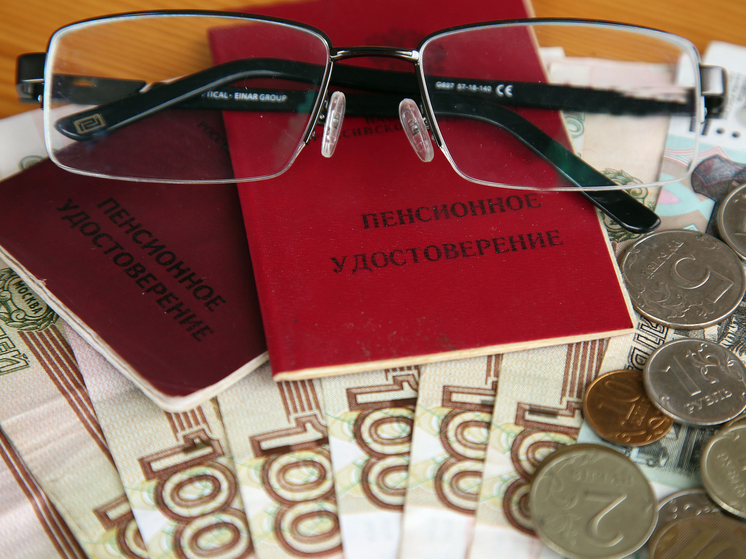Oil and gas have been Russia’s leading industries, both interms of taxes paid and the size of deals struck. This year’s biggest deal was a BP-TNK joint venture, estimated at $2.4 billion.
Foreign investors have been equally active on Russia’s stock market. Unfortunately, the favorable tide broke then when YUKOS CEO Mikhail Khodorkovsky was taken into custody in Moscow. Surprisingly, this did not stop Moody’s giving Russia an improved investment rating. However, other agencies, such as S&P and Fitch IBCA, did not share Moody’s optimism on Russia.
Experts believe 2003 has been an interesting year for Russia in macroeconomic terms, especially compared to previous years. But last year’s results should not dim future prospects. And the high growth rate does not necessarily mean stability in all sectors of the economy. Russia’s advance has so far been under momentum and the depended more on the favorable state of the world markets, than on the government’s clear and effective economic agenda.
In second place are the mobile stocks, up 111.7%. As this sector’s correlation with the NASDAQ has increased lately, it has been less affected by the market’s overall retracement toward year end. In addition, on a three-year basis, mobile stocks have posted a significant return of 297.9%, putting them third among the Russian sectors.
This year’s bronze goes to the electricity sector, pushed up 90.2% by investors hunting for fundamental and strategic value ahead of the UES reform. Regional utility commons and preferreds have been some of the best performers in Russia; only these companies’ small capitalizations prevented the sector from becoming the brightest star of 2003. Although significant strategic investor activity is unlikely before the elections, the regional utilities could well see further buying action after the political situation becomes more stable. Not to mention UES’ future performance, which depends on the issue of cash bids in the upcoming ‘genco’ auctions.
The fixed line telecommunications sector has seen a relatively good year, up 53.7%. At the same time, it is among the major laggards on a three-year basis. Should a proper privatization of Svyazinvest be announced, telecom operators could certainly perform.
As a result of YUKOS CEO Mikhail Khodorkovsky’s arrest, the oil names have fallen to the middle of the pack, up 43.5% YTD. However, Russia’s largest sector managed to hold second place on a three-year basis, trailing only Russia’s banking sector, Sberbank to be precise. While Gazprom has been the undisputed leader on both a YTD and a three-year basis, the stock is still relatively attractive and could yield substantial returns should the ‘ring-fence’ issue be resolved.
Last year’s winner, the banking sector, turned in only a modest performance of 28.1% in 2003. That said, it is still streets ahead over three years, up a whopping 741.9%.
Retail (up 17.9%), manufacturing (up 17.6%), consumer (up 7.5%) and beer (up 3.2%) also posted positive returns on the back of the overall bullish sentiment on the Russian market before 4Q03.
Also worth a mention are second-tier stocks, many of which have had the time of their lives this year. Should investors regain confidence in the Russian equity market, expect them to continue hunting among the less-liquid names.
James FENKNER, CFA, head of research, chief strategist, Troika Dialog
One source of optimism is the macroeconomic forecast for the next few years. In 2004, real GDP growth is expected to be 5.3%, real growth in industrial output – 7.2%, and real growth in investment in fixed assets – 12%. And that is given a conservative oil price of $21.5/bb for Brent.
Investment is likely to grow in quantity as well, that is, the dominant trend since 2000 of stable growth in investment into the country will continue. I estimate investment in 2003 at around $26 billion. In 2004 I expect $32 billion of investment, of which around $6 billion will be direct investment.
In terms of the structure of investment, including sectors, there is unlikely to be any change in 2004. The main recipients of investment will continue to be fuel and energy, metals, and heavy industry. But I am sure that investment will increase in the consumer sector, a more dynamic segment in my view. It will grow considerably faster than GDP. The motive force will be increasing disposable incomes and the characteristic Russian love of consumption.
Unfortunately, the consumer sector, like others providing Russia’s strong growth, is hardly represented on the stock market. Companies in the sector may be floated in 2005. For 2004, the sectors on the stock market most interesting to investors will be telecommunications and gas.
Regional telecommunications companies are to raise prices 20-25% in 2004, at the same time as the ruble is strong and long-distance traffic is rising. It is also possible that the sale of 75% of Svyazinvest next year will be the sale of the year and the catalyst to a revaluation of all Russian telecommunication companies.
Gazprom is attractive due to rising domestic gas prices, and the expected liberalization of the market in its shares in 2004. The latter factor could see a flow of investment onto the Russian stock market.
Aleksandr KORCHAGIN, director, analytical department, Prospect
From the fundamental perspective, the 2003 rally was the result of several key factors, some of which are interconnected.
Macroeconomic strength. Russia’s robust economy continued to benefit from high commodity prices, sensible economic policy and structural reform. The strength of the macroeconomic performance surprised on the upside, prompting a spate of GDP forecast upgrades. Russia’s achievements on the macroeconomic front were underscored by Moody’s awarding investment grade status to Russia’s sovereign debt.
Continued spread compression. A more technical and indirect measure of Russia’s progress, the spread between Russia’s 2030 Eurobond and 2030 US Treasury bonds dropped to 1.75% on the back of the Moody’s upgrade in October from 4.2% at the beginning of the year, reflecting a reduction of the country risk premium (the flip side of a strong economic performance and political stability). Following the arrest of Yukos CEO Mikhail Khodorkovsky the spread recovered to the pre-upgrade range of 2.1%-2.3%; nevertheless, the figure halved during the year.
As a result of the falling spread, the required rate of return for Russian equities also declined, providing upside to the DCF-based value of stock.
Market volatility U-shaped. The market’s relative volatility – measured by comparing the RTS index’s daily fluctuations to those of the S&P500 – dropped from levels of 50%-60% in 2002 to near-zero levels in October 2003. However, the strengthening attacks on Yukos then resulted in the indicator surging to levels of 50%-70%. In our theoretical valuation framework we assumed a 2003 excess volatility factor of 1.2 compared to 1.5 for 2002, resulting in a reduction of some 150bp from the equity premium.
Domestic investors a new factor. The fact that growth of equity holdings by Russian banks (a useful proxy for domestic participation) outpaced that of the RTS by a wide margin seems to show that domestic buying was responsible for driving the market up during the year.
Foreign investors net sellers. Statistics for GEM/International and EMEA funds suggest that in contrast with domestic investors, foreign investors were net sellers through most of the year. Given that during the year the appetite for emerging market equities was high, the selling indicates that by and large foreign investors either underestimated Russia’s potential or overestimated its risk.
M&A activity. The hunt for still undervalued assets accelerated during the year on many different fronts, becoming a factor in market performance.
Champions and laggards – turning the tables on 2002.
Turning to individual stocks, it should be noted that most of the year’s champions were at the bottom of the pile in 2002, while the stars of 2002 – Yukos, Sibneft and Sberbank – were below average in 2003.
While it might be tempting to attribute the phenomenon to a mean reversal effect, we believe the key reasons were sector-specific:
Mining and metals blue chips Norilsk Nickel and Severstal benefited from a strengthening price environment, after a dismal 2002.
Mobile blue chips MTS and Vimpelcom rode the wave of rising disposable incomes across the country.
Regional telecoms rallied following the completion of sector restructuring.
UES, Mosenergo and other electricity stocks surged after the passage of power sector restructuring laws triggered a wave of strategic buying.
Sector-specific factors were equally responsible for the sub-par performance of oil stocks: including political attacks on Yukos and rising fears of a harsher tax regime for the sector.
Alex KANTAROVICH, Chief Strategist, Aton
This hunger means that the big money can come into the sector, which will massively increase valuation of assets, which, in turn, attracts portfolio investors, too. On the other hand, Russia has long been suffering from significantly depressed private consumption, which is only now starting to unbundle. Rapid economic growth and appreciation of the rouble make consumption growth even more spectacular. At the same time, appreciating currency means that it is cheaper to import than to produce domestically, but there are some things, which one can not economically efficiently import – these are called non-tradeables. The best examples of those are consumer services, such as telecommunications, and food processing, such as dairy producing companies. Therefore, we expect that same sectors, which have been attracting foreign interest in the past decade, to continue to do so in the future.
Alexey MOISSEEV, vice president, Renaissance Capital





















